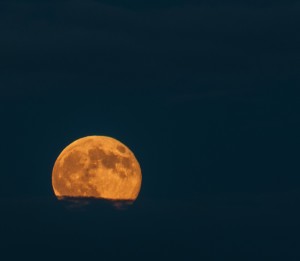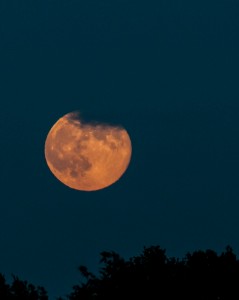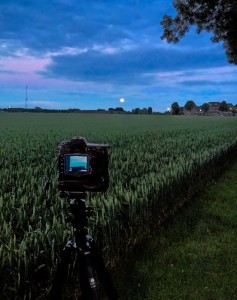Last week I took a first try at shooting the supermoon. In this post I’ll share my experience.
 Supermoon
Supermoon
A supermoon occurs when the moon orbits the Earth at its closest point, coinciding with a full moon. The moon then looks very large, especially low on the horizon. This year this occurred on Sunday, June 23rd.
Preparations
 I used the excellent Star Walk app on my iPhone to predict at what time and direction the moon would rise that evening. This app is also very convenient on location as you can superimpose the calculated sky on the view from the camera so you get a very nice view of what will be visible where.
I used the excellent Star Walk app on my iPhone to predict at what time and direction the moon would rise that evening. This app is also very convenient on location as you can superimpose the calculated sky on the view from the camera so you get a very nice view of what will be visible where.
As I would be shooting from a tripod I packed 4 kg of extra weight in a plastic bag that I could hang from the tripod to make sure it would not move in the wind. Another very important piece of gear is a remote control for the camera. The control I have can be used as a simple remote for triggering the camera but also as a timelapse controller.
In the field
 After packing the gear in a backpack I went out looking for a good spot. The spot I had in mind didn’t work out to be what I thought it would be so I had to drive around a bit to find a better spot. That resulted in the supermoon already being above the horizon.
After packing the gear in a backpack I went out looking for a good spot. The spot I had in mind didn’t work out to be what I thought it would be so I had to drive around a bit to find a better spot. That resulted in the supermoon already being above the horizon.
I set up my Sirui T-1204X tripod and weighted it down with the weights I had brought with me. My camera was a Nikon D300s with the largest lens I had, an old Sigma 70-300mm. Aperture was at f10-f11 and the shutter time varied between 1/5 s and 1/100 s. ISO was at 200. The time was 9.30 pm.
After having made some test shots I started a timelapse recording taking 3 bracketed shots every 12 seconds (2 seconds for taking the shots followed by a 10 second delay). Unfortunately, after about 50-60 shots the clouds had completely covered up the moon so I had to stop. You can watch the short timelapse movie below.
Conclusion
Although I had great fun capturing the supermoon it was kind of a last minute idea to actually go out and do it. Next time I will take more time to plan the shoot and find a good location.
I won’t bother with bracketed shooting next time. I didn’t use the extra shots and it takes up more time which I could have used better to take more photos to have a smoother timelapse movie as a result. I think a 2 or 3 second interval between photos will give a nice smooth timelapse movie.
I used a 300mm lens and I think the larger the lens the better results you will get in a situation like this. The moon will be much larger, have more visible detail and, especially if there is something interesting in the foreground, the overall image will have more impact. I also could have opened the aperture a bit more (say f8) as that would have resulted in a faster shutter time and sharper images.
For more information and tips check out the article How to photograph the supermoon.
Shooting the moon isn’t very difficult, you only need a steady tripod and a big lens. Just try it and experiment!
